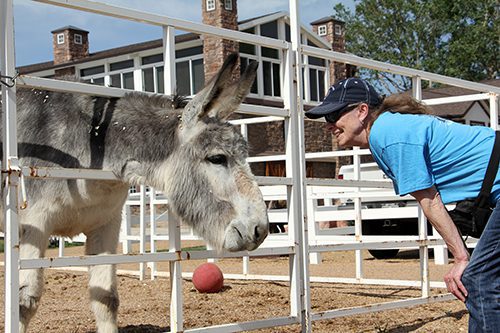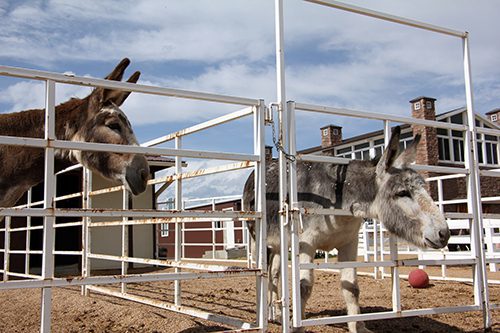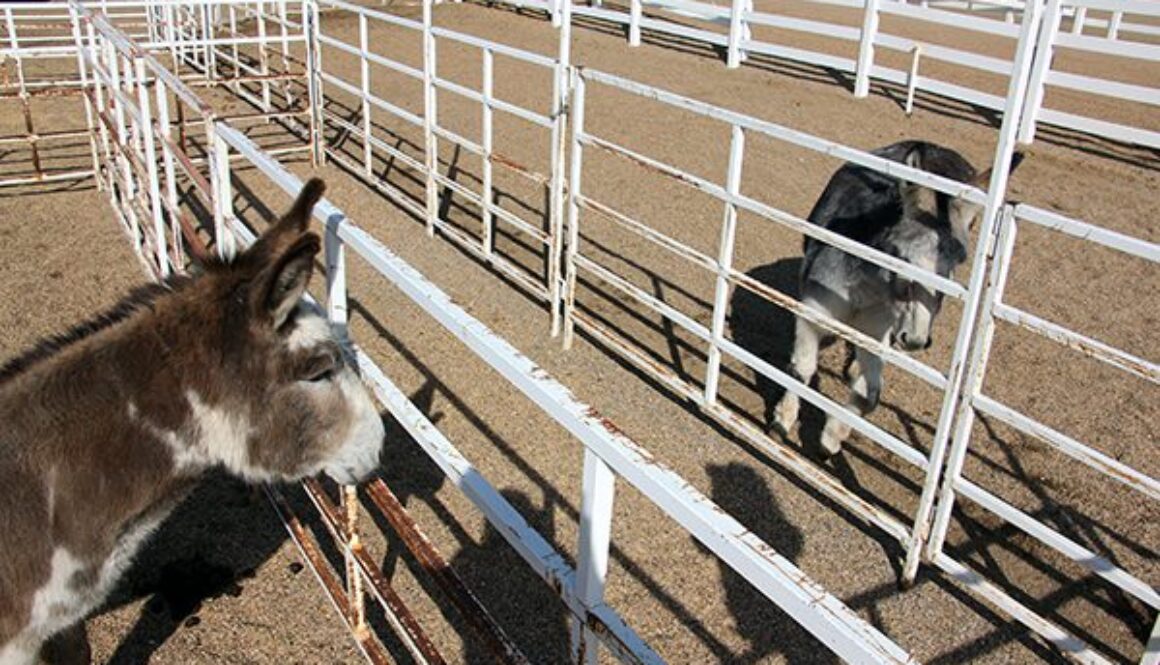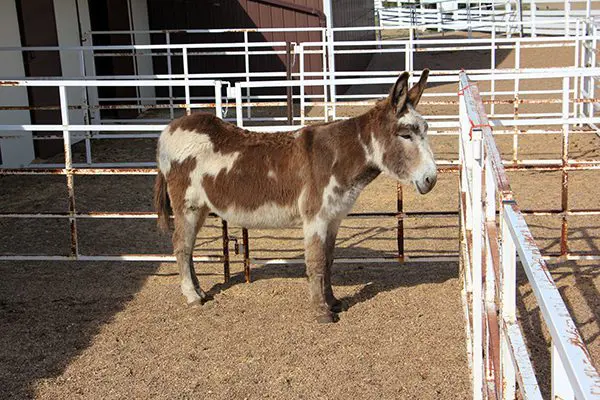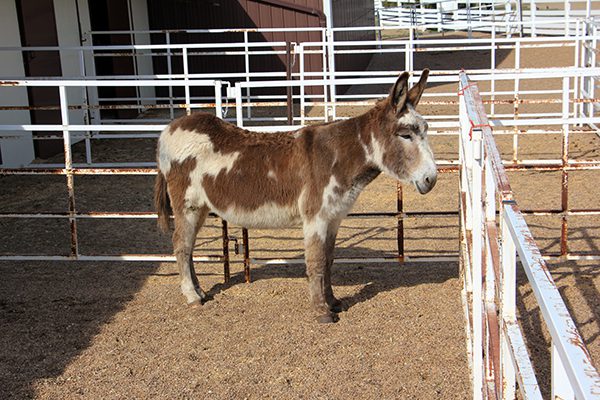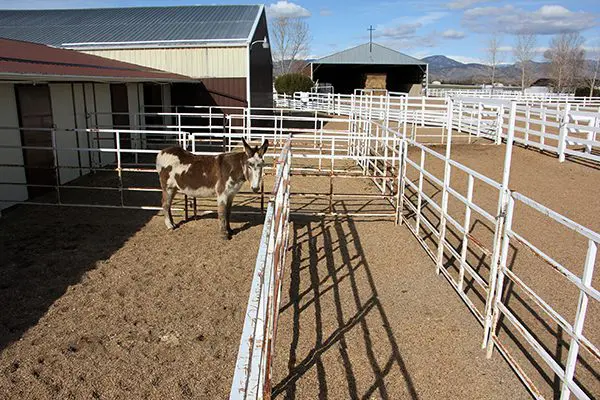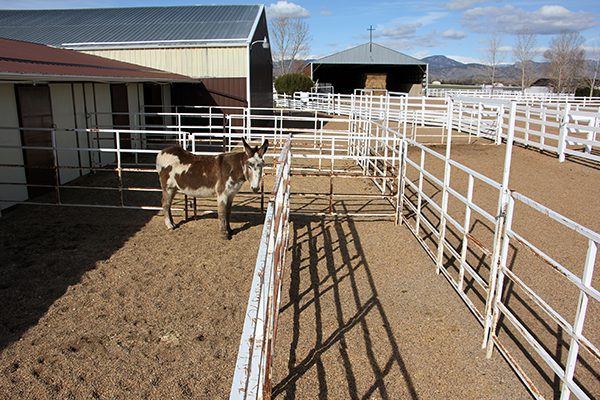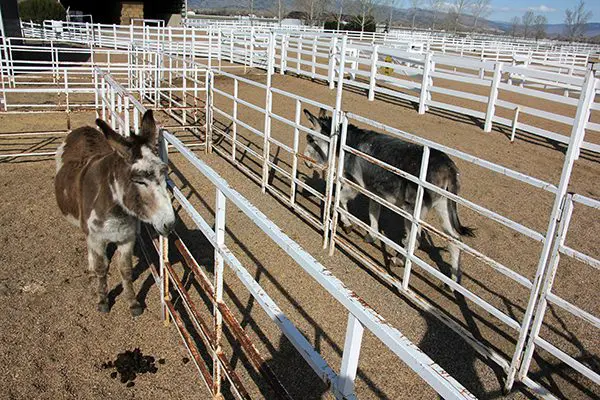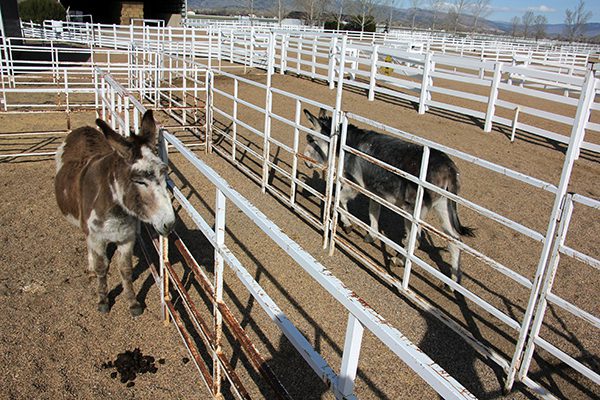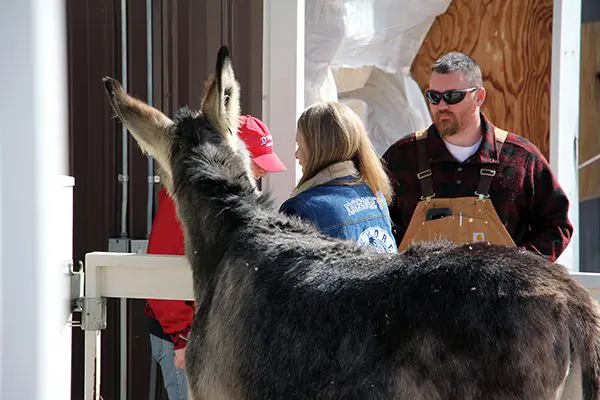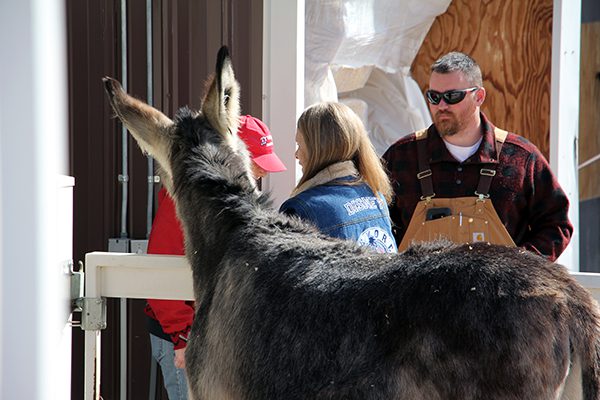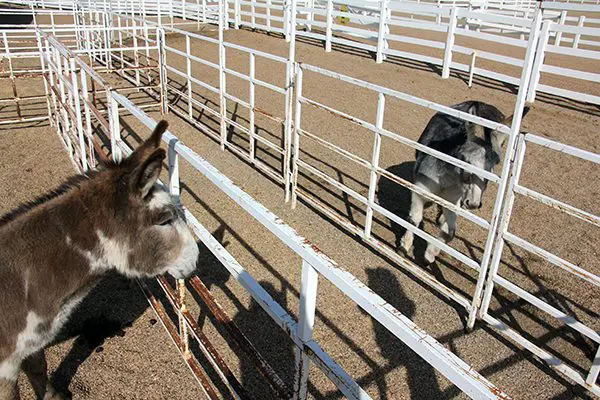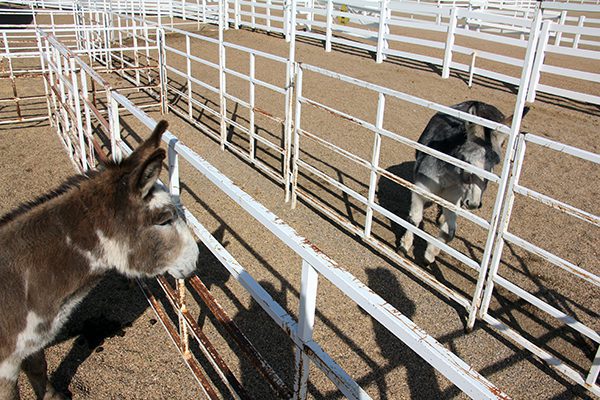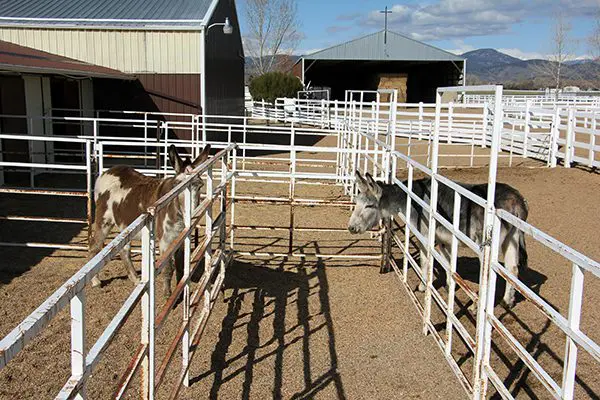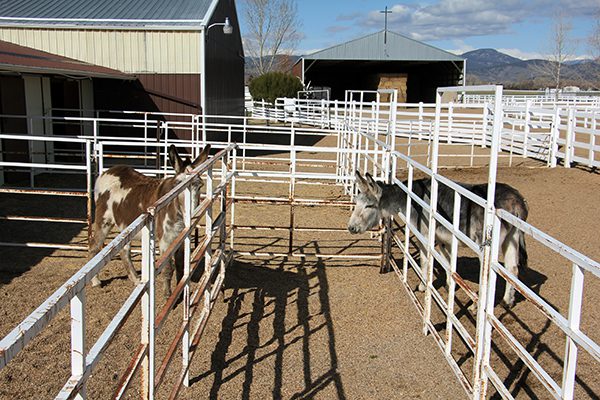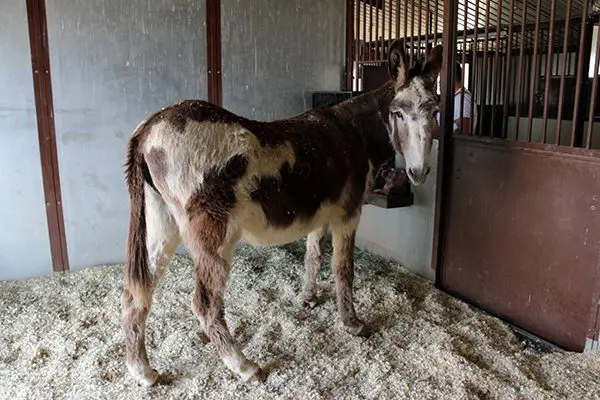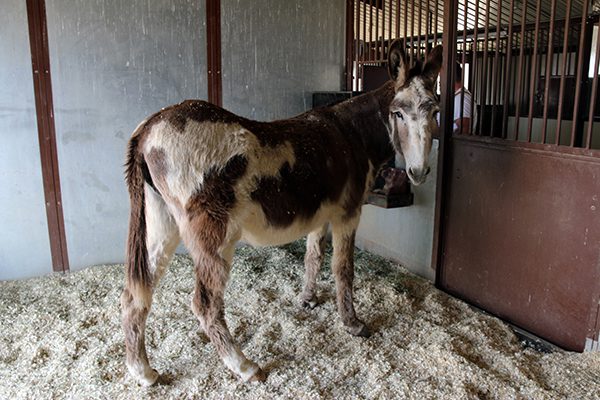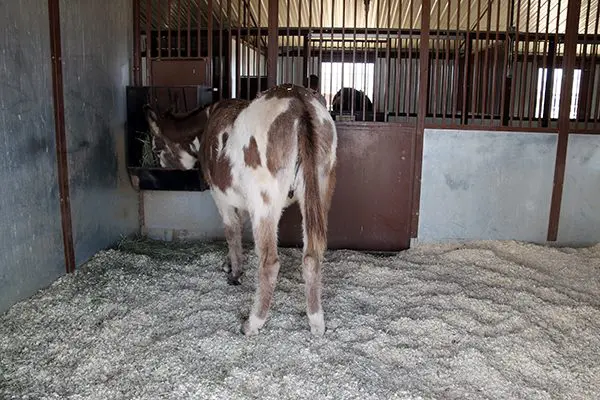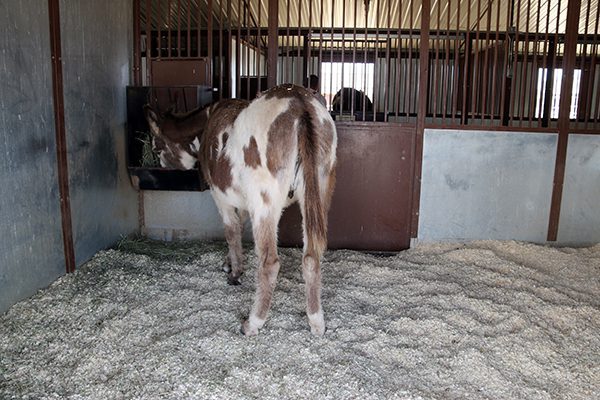WRANGLER’S DONKEY DIARY: Wrangler’s New Love! 3-30-20
Wrangler came to us in 2017 and has had to be in turnout by himself because he was so rambunctious that he didn’t really fit into any of our turnout groups. He was always turned out next to “friend” like Sir Guy but never with anyone else. Mr. Moon was his stable buddy, but still, there was always a run fence between them. Mr. Moon recently turned 32 years old and developed a condition that required that he be put down. Wrangler’s “stable buddy” was now gone.


With the empty stall and run next to Wrangler, we now had space to consider getting him a new companion. I checked with my friend in Oklahoma and we found Chasity! What a lovely “Lady!” I was told she was a really FORWARD moving jennet with a lot of independence and enthusiasm. We thought she would be the perfect companion for Wrangler!


Chasity was delivered on 3-30-20 and the introductions began while she was in quarantine in a space where she could see Wrangler, but they could not reach each other. They played with excitement back and forth along the fence line for a bit! They were clearly VERY interested in each other! Love had begun to blossom!


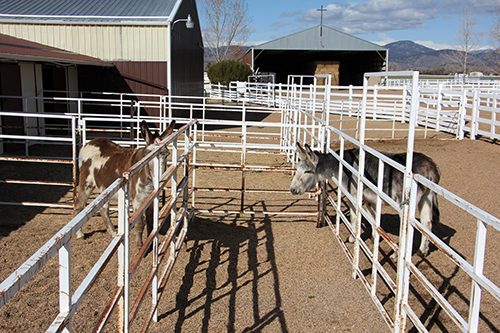
The next day the vet came to do a health check on Chasity. She will need a lot of core strength work, but it will be a good thing to keep her occupied while she is in quarantine. Wrangler looked on with interest as the vet surveyed her condition. Two months passed before Chasity was finally put in Mr. Moon’s stall and run next to Wrangler…they eyed each other suspiciously…this was a lot closer than they had previously been!

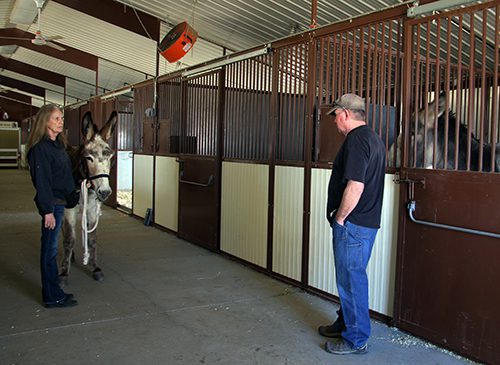

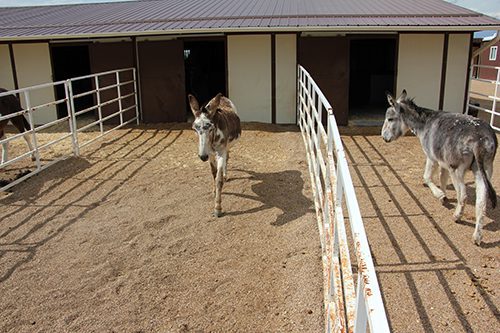
Wrangler stuck his head through the panels to sniff and Chasity looked interested, then decided to play shy!

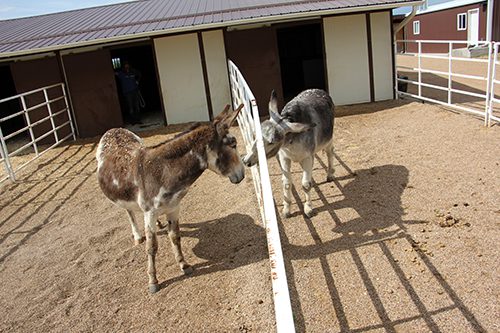


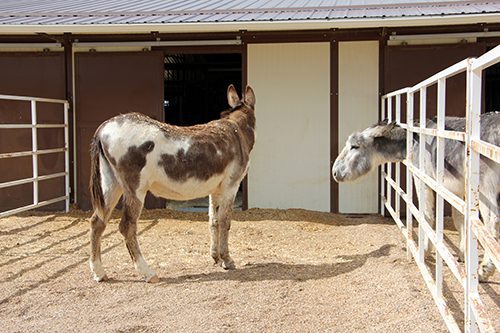
This only frustrated Wrangler and he began some very active male donkey antics which spooked her away from him.

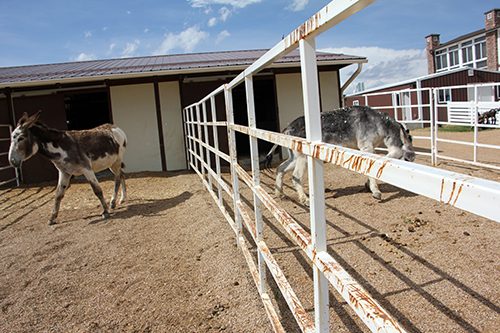

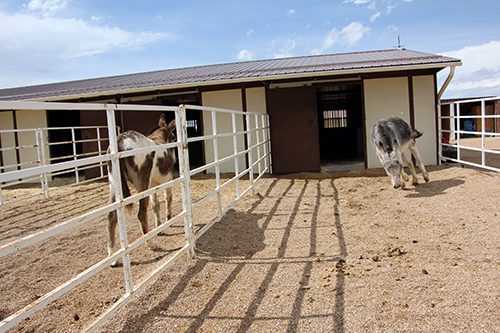
She returned only to be spooked away again while Wrangler continued his antics and embarrassed himself by tripping!

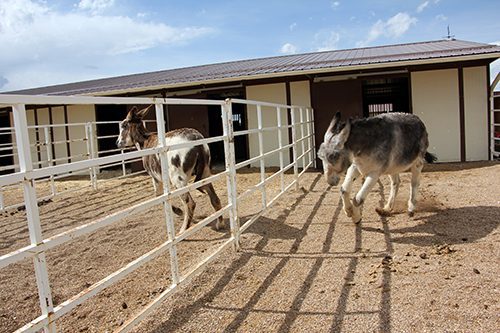

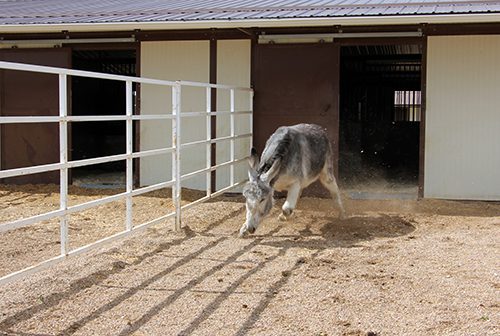
Chasity thought maybe NOW he would calm down and Wrangler started up AGAIN! She thought…REALLY?!!!



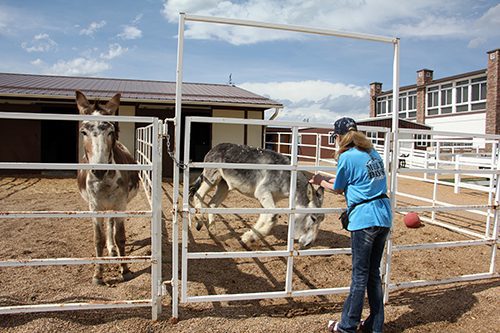
I called Wrangler over and had a little talk with him about good manners and being polite to young ladies. He seemed to listen and said he was sorry. Chasity wasn’t sure if she believed him!

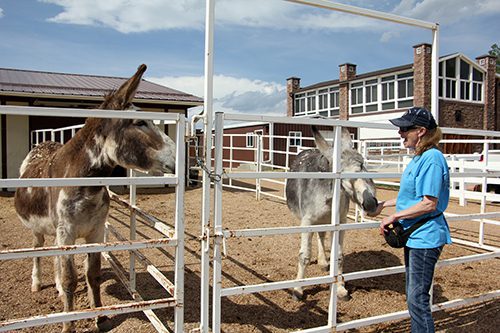


But after receiving their crimped oats reward for settling down…all was GOOD!!!

